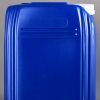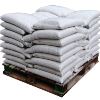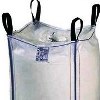| We are manufacturers of Magnesium Stearate FCC Food BP Ph Eur USP NF Grade, Pharmaceutical Excipients in India. We offer Halal and Kosher Magnesium Stearate FCC Food BP Ph Eur USP NF Grade made in an ISO9001, ISO22000 (FSSC22000) cGMP and GLP certified facility. |




Magnesium Stearate SDS GHS of Manufacturers
Magnesium Stearate Specifications Sheet of Manufacturers
Magnesium Stearate SDS, Safety Data Sheet
MSDS, Material Safety Data Sheet
1. PRODUCT NAME AND COMPANY IDENTIFICATION
Product Name & Other Names: Magnesium Stearate.
CAS #: 557-04-0
EINECS EC Number: 209-150-3
Chemical Formula: (C17H35COO)2Mg
Molecular Weight: 591.24
Relevant uses and uses advised against (if any): Laboratory and Industrial Manufacturing.
2. HAZARDS IDENTIFICATION
GHS, Globally Harmonized System Classification in accordance with 29 CFR 1910
Classification according to Regulation (EC) No 1272/2008
Not a hazardous substance or mixture according to Regulation (EC) No. 1272/2008.
This substance is not classified as dangerous according to Directive 67/548/EEC.
Labeling according to GHS & Regulation (EC) No 1272/2008
GHS Label Elements NONE |
Signal Word: None
Precautionary statements:
P261: Avoid breathing dust/fume/gas/mist/vapors/spray.
P262: Do not get in eyes, on skin, or on clothing.
P281: Use personal protective equipment as required.
P302+P352 - IF ON SKIN: Wash with plenty of soap and water.
P304 + P340 - IF INHALED: Remove victim to fresh air and keep at rest in a position comfortable for breathing.
P305 + P351 + P338 - IF IN EYES: Rinse cautiously with water for several minutes. Remove contact lenses, if present and easy to do. Continue rinsing.
P337+313: If eye irritation persists get medical advice/attention.
3. COMPOSITION/INGREDIENT INFORMATION
Product Name & Other Names: Magnesium Stearate.
CAS #: 557-04-0
EINECS EC Number: 209-150-3
4. FIRST AID MEASURES
Eyes: Flush with plenty of water or eye wash solution for 15 minutes. WARM water MUST be used. Get medical attention if irritation persists.
Skin: Wash with soap and water. Cover irritated skin with an emollient. Get medical attention if irritation occurs.
Ingestion: Do NOT induce vomiting unless directed to do so by medical personnel. Never give anything by mouth to an unconscious person. If large quantities of this material are swallowed, call a physician immediately. Loosen tight clothing such as collars, ties, belts, or waistbands.
Inhalation: Remove to fresh air. If not breathing, give artificial respiration. If breathing is difficult, give oxygen. Seek medical attention.
5. FIRE FIGHTING MEASURES
Flammability of Product: Magnesium stearate may be combustible at high temperatures.
Auto Ignition Temperature: Not Available
Hazardous Combustion Products: CO, CO2 and MgO
Conditions Under Which Flammability Could Occur: Not Available
Extinguishing Media: Dry Chemical; Carbon Dioxide; Foam Note: Do not use solid water jet.
Special Information: In the event of a fire, wear full protective clothing and NIOSH-approved self-contained breathing apparatus with full face piece operated in the pressure demand or other positive pressure mode. At high temperatures under fire conditions, it may produce toxic or irritating fumes. Fire-extinguishing work is done from the windward and the suitable fire-extinguishing method according to the surrounding situation is used.
6. ACCIDENTAL RELEASE MEASURES
Personal precautions, protective equipment, and emergency procedures: Ventilate area of leak or spill. Avoid breathing dust/fumes/gas/mist/vapors/spray. Use individual protective equipment (waterproof boots, suitable protective clothing, safety glasses, etc.).
Environmental precautions: Do not let the product enter drains, soil, or water sources.
Methods and materials used for containment Cleanup procedures and Storage: Contain spilled material. Cover with an inert, non-combustible absorbent material, (e.g. sand, earth, diatomaceous earth, vermiculite). Vacuum or sweep-up and remove to an approved disposal container.
7. HANDLING AND STORAGE
Precautions for safe handling: Apply according to good manufacturing and industrial hygiene practices. Ensure proper ventilation. In case of insufficient ventilation, wear suitable respiratory equipment. Wash thoroughly after handling. Do not drink, eat, or smoke while handling. Avoid contact with skin, eyes, and clothing. Minimize dust generation. Avoid breathing dust/fumes/gas/mist/vapors/spray. Keep container tightly closed. Avoid ingestion and inhalation. Use individual protective equipment (waterproof boots, suitable protective clothing, safety glasses, etc.). Prevent any contact with hot surfaces.
Conditions for safe storage, including any incompatibilities: Store in cool, dry, and ventilated area away from heat sources and protected from sunlight in tightly closed original container. Keep air contact to a minimum. Store protected from heat, sparks and ignition sources and incompatible materials. Do not store with incompatible materials like strong oxidizing agents.
8. EXPOSURE CONTROL/PERSONAL PROTECTION
Engineering Controls: Use process enclosures. Provide exhaust ventilation or other engineering controls to keep the airborne concentrations of vapors below their respective threshold limit value. If user operations generate dust, fume, or mist, use ventilation to keep exposure to airborne contaminants low. Ensure that eyewash stations and safety showers are proximal to the work area.
Ventilation System : A system of local and/or general exhaust is recommended to keep employee exposures as low as possible.
Personal Respirators (NIOSH Approved): For conditions of use where exposure to dust or mist is apparent and engineering controls are not feasible, a particulate respirator may be worn.
Skin Protection: Wear protective gloves and clean body-covering clothing.
Eye Protection: Use chemical safety goggles and/or full face shield where dusting or splashing of solutions is possible.
Other Control Measures: Maintain good housekeeping in work area. Maintain eye wash fountain and quick-drench facilities in work area.
9. PHYSICAL AND CHEMICAL PROPERTIES
Appearance: White solid
Odor: Not available.
Odor threshold: No data found.
pH: No data found.
Relative density: around 1.03
Melting Point: 88C (190.4F)
Boiling Point: No data found.
Flash point: No data found.
Auto-ignition temperature: No data found.
Decomposition temperature: No data found.
Upper/lower flammability or explosive limits: Not available.
Vapor pressure: No data found.
Vapor density: No data found.
Evaporation rate: No data found.
Flammability (solid, gas): No data found.
Partition coefficient: n-octanol/water: No data found.
Solubility in Water: Slightly soluble in cold water.
Viscosity: No data found.
10. STABILITY AND REACTIVITY
Stability: Stable under normal usage.
Conditions to Avoid: Not Available
Incompatibility (Materials to Avoid): Strong oxidizing agents.
Hazardous Decomposition products: Magnesium oxide, carbon oxides and fumes.
Hazardous Polymerization: Will not occur.
11. TOXICOLOGICAL INFORMATION
Toxicity to Animals: No data found.
Carcinogenicity: Not listed as a human carcinogen by IARC, ACGIH, OSHA and NTP.
Reproductive Toxicity: No data found.
Teratogenic: No data found.
Mutagenic: No data found.
12. ECOLOGICAL INFORMATION
Ecological Information: Not Available
Persistence and Degradability: No data found.
Mobility: No data found.
Bioaccumulation/ Accumulation: No data found.
Results of PBT and vPvB assessment: This substance/mixture contains no components considered to be either persistent, bioaccumulative and toxic (PBT), or very persistent and very bioaccumulative (vPvB) at levels of 0.1% or higher.
13. DISPOSAL CONSIDERATIONS
Waste Disposal: Whatever cannot be saved for recovery or recycling should be managed in an appropriate and approved waste disposal facility. Processing use or contamination of this product may change the waste management options.
14. TRANSPORT INFORMATION
DOT USA, TDG Canada & ADR/RID Europe: Not regulated.
IMO/IMDG: Not regulated.
IATA/ICAO: Not regulated.
15. REGULATORY INFORMATION
USA:
California Prop. 65 Components: This product does not contain any chemicals known to State of California to cause cancer, birth defects, or any other reproductive harm.
DISCLAIMER: The information and recommendations set forth herein (hereinafter "Information") are presented in good faith and believed correct as of the date hereof. This MSDS sheet is intended only as a guide to the appropriate precautionary handling of the material by a properly trained person using this product. Individuals receiving the information must exercise their independent judgment in determining its appropriateness for a particular purpose.
Magnesium Stearate FCC Food BP Ph Eur USP NF Grade Manufacturers
Anmol Chemicals
S-8, SARIFA MANSION, 2ND FLANK ROAD, CHINCHBUNDER, MUMBAI 400009, INDIA
TEL: (OFFICE) 91-22-23770100, 23726950, 23774610, 23723564. FAX: 91-22-23728264
e-mail: anmolc@mtnl.net.in

Fracture Diverting Agent, Ferric Chloride Hexahydrate, Malic Acid, Skatole & Indole, Potassium Bicarbonate & Carbonate, Sodium Caprylate, Steartic Acid, Tartartric Acid
Exports to USA, Canada, UAE, Dubai, South Africa, Tanzania, Kenya, Nigeria, Egypt, Uganda, Turkey, Mexico, Brazil, Chile, Argentina, Europe Netherlands, Italy, Spain, Germany, Portugal, France, Malaysia, Indonesia, Thailand, Vietnam, Korea, Japan, etc.
Copyright and Usual Disclaimer is Applicable.